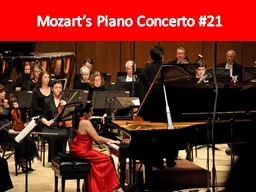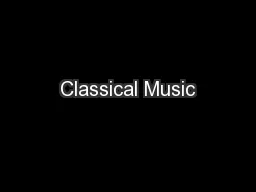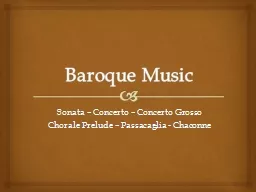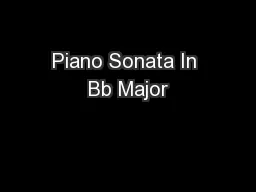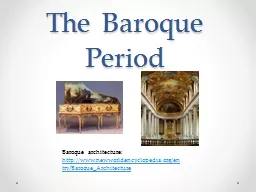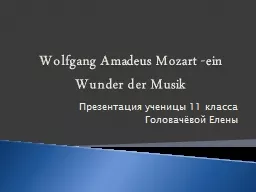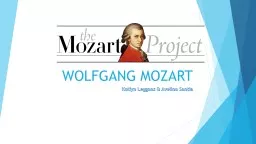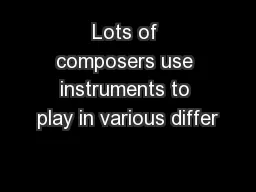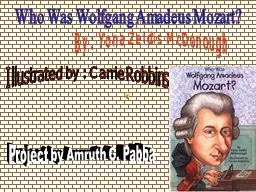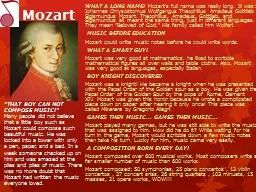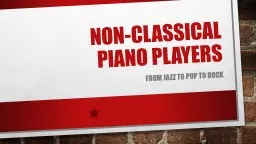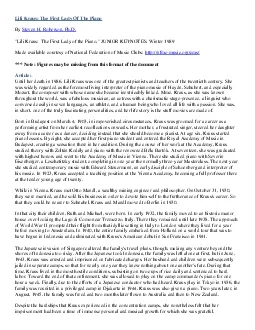PPT-Mozart’s Piano Concerto #21
Author : tawny-fly | Published Date : 2019-12-15
Mozarts Piano Concerto 21 Piano Concertos Concertos were invented in the Baroque period as a form where a soloist or small group contrasted with the rest of the
Presentation Embed Code
Download Presentation
Download Presentation The PPT/PDF document "Mozart’s Piano Concerto #21" is the property of its rightful owner. Permission is granted to download and print the materials on this website for personal, non-commercial use only, and to display it on your personal computer provided you do not modify the materials and that you retain all copyright notices contained in the materials. By downloading content from our website, you accept the terms of this agreement.
Mozart’s Piano Concerto #21: Transcript
Download Rules Of Document
"Mozart’s Piano Concerto #21"The content belongs to its owner. You may download and print it for personal use, without modification, and keep all copyright notices. By downloading, you agree to these terms.
Related Documents

